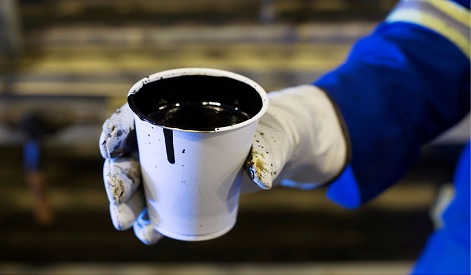-
Authoradmin
-
Comments0 Comments
-
Category
By Christopher Johnson
LONDON (Reuters) – Oil prices steadied on Friday as U.S. sanctions on Tehran squeezed Iranian crude exports, tightening supply even as other key exporters increased production.
Global crude oil benchmark Brent (LCOc1) was up 20 cents at $81.92 a barrel by 0820 GMT. The contract hit a four-year high of $82.55 this week but has been fairly stable during the third quarter, gaining around 3 percent since the end of June.
U.S. light crude (CLc1) was 20 cents higher at $72.32 a barrel. It is up around 3.5 percent this month, but down 2.6 percent since the end of June.
“Dips remain well supported as Iran sanctions continue to underpin sentiment,” said OANDA head of APAC trading Stephen Innes, but added: “While the likely loss of Iranian supply may be the dominant market theme, OPEC production may be rising.”
U.S. sanctions on Iran, the third-largest producer in the Organization of the Petroleum Exporting Countries, kick in on Nov. 4, as Washington asks buyers of Iranian oil to cut imports to zero to force Tehran to negotiate a new nuclear agreement and to curb its influence in the Middle East.
Other OPEC countries have been increasing production in recent months but global inventories have been falling as supply tightens, analysts say.
Saudi Arabia is expected to add extra oil to the market over the next couple of months to offset the drop in Iranian production.
Two sources familiar with OPEC policy told Reuters Saudi Arabia and other producers had discussed a possible production increase of about 500,000 barrels per day (bpd) among OPEC and non-OPEC producers.
However, ANZ said in a note on Friday that major suppliers were unlikely to offset losses due to the sanctions estimated at 1.5 million bpd.
At its 2018 peak in May, Iran exported 2.71 million bpd, nearly 3 percent of daily global crude consumption.
Looking to 2019, Saudi Arabia is concerned rising U.S. shale production could create another glut, especially if a stronger dollar and weaker emerging market economies reduce global demand for oil.
OPEC forecasts that its non-OPEC rivals led by the United States will increase output by 2.4 million bpd in 2019 while global oil demand should grow by just 1.5 million bpd.
U.S. crude production hit a record high of 11.1 million bpd last week, the U.S. Energy Information Administration estimates.
Recent Comments
- Starlight Herot on Euro Higher on German Data, Sterling Edges Lower
- Frost Dragont on Euro Higher on German Data, Sterling Edges Lower
- Gwinnettt on Euro Higher on German Data, Sterling Edges Lower
- Vanessat on Euro Higher on German Data, Sterling Edges Lower
- Christinet on Euro Higher on German Data, Sterling Edges Lower
Archives
- April 2025
- March 2025
- February 2025
- January 2025
- December 2024
- November 2024
- October 2024
- February 2024
- July 2023
- July 2021
- May 2021
- March 2021
- February 2021
- September 2020
- May 2020
- February 2020
- December 2019
- November 2019
- October 2019
- September 2019
- August 2019
- July 2019
- June 2019
- May 2019
- April 2019
- March 2019
- February 2019
- January 2019
- December 2018
- November 2018
- October 2018
- September 2018
- August 2018
- July 2018
- June 2018
- May 2018
- April 2018
- March 2018
- February 2018
- January 2018
- December 2017
- November 2017





